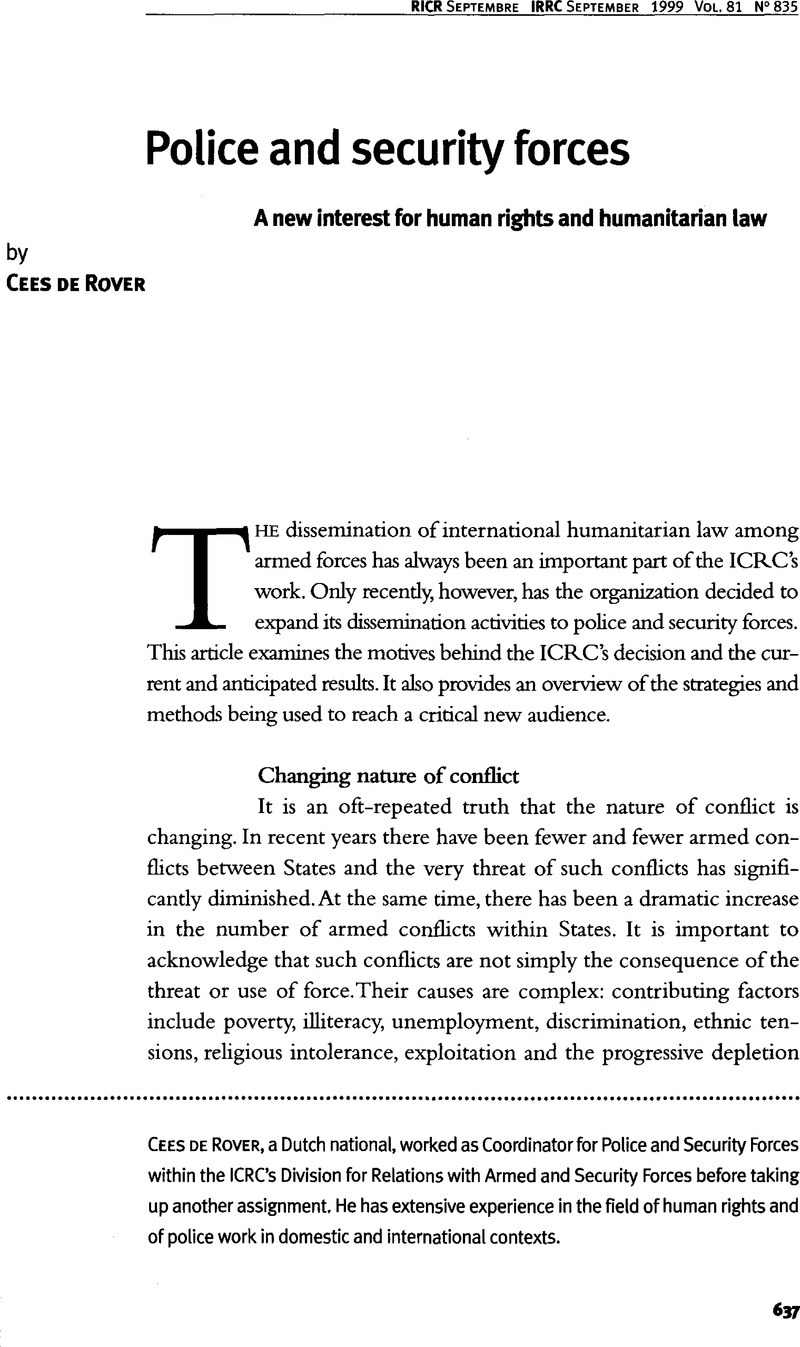No CrossRef data available.
Published online by Cambridge University Press: 19 April 2010

1 Code of Conduct for Law Enforcement Officials, adopted by General Assembly Resolution 34/169 of 17 December 1979. The Code consists of eight articles covering all aspects of law enforcement behaviour and responsibility. It is generally referred to as a “soft-law” instrument as its provisions do not constitute legally binding obligations. However, it is based upon basic human rights principles which are protected under treaty law. It provides national law enforcement officials with guidance on the proper way to perform their tasks and duties.
2 Ibid, Art. 1 (commentary, para. a).
3 Ibid, Art. 1 (commentary, para. b).
4 Human rights treaties of greatest significance to the duties and responsibilities of law enforcement officials include the International Covenant on Civil and Political Rights, the Convention Against Torture and other Cruel, Inhuman or Degrading Treatment or Punishment, the Convention on the Elimination of Racial Discrimination, the Convention on the Elimination of Discrimination Against Women, the Convention on the Rights of the Child, the Convention on the Status of Refugees (1951) and the UN Protocol Relating to the Status of Refugees (1967).
5 See, inter alia, Basic Principles on the Use of Force and Firearms (adopted by the 8th UN Congress on the Prevention of Crime and Treatment of Offenders, 1990), the Code of Conduct for Law Enforcement Officials (supra note 1), the Body of Principles for the Protection of All Persons under Any Form of Detention or Imprisonment (GA Res. 43/173 of 9 December 1988), the Declaration of Basic Principles of Justice for Victims of Crime and Abuse of Power (GA Res. 40/34 of 29 November 1985) and the United Nations Standard Minimum Rules for the Administration of Juvenile Justice (GA Res 40/33 of 29 November 1985).
6 de Rover, C., To Serve and to Protect. Human Rights and Humanitarian Law for Police and Security Forces, ICRC, Geneva, 1998.Google Scholar
7 See, for example, Report of the Special Rapporteur on Extrajudicial, Summary or Arbitrary Executions, UN Doc. E/CN.4/1998/68 (1997), par. 41 and 42.
8 Supra, note 6.
9 See Equity International, Integrating Human Rights into the Functioning of the Military Police of the State of Sao Paulo, Report of Project BRA/98/01, December 1998. Report on file with the author.